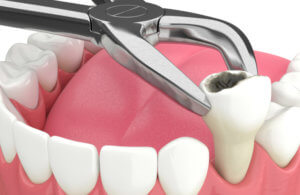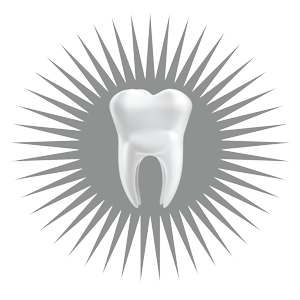
Tooth Extraction Opelika AL
Saving a tooth is impossible in some instances, and in those cases you will need a tooth extraction. If you are in need of a tooth extraction, the dental professionals at East Alabama Dental Group can help.
We offer tooth extractions for patients in Opelika, AL and the surrounding areas. This may be necessary if you have a tooth that is severely damaged or decayed, or if you have an infection. Our team at East Alabama Dental Group will work diligently to ensure that your tooth extraction is as comfortable and stress-free as possible.
How do I know if I need a tooth extraction?
There are a few reasons why you may need a tooth extraction. Here’s a list of things to look for:
- Persistent pain. If you have a toothache that will not go away, there’s a chance you will need a tooth extraction. There is also a chance it could be saved, but you should see a dentist right away for an accurate assessment on the tooth.
- Swelling around the tooth and/or jaw. This is a strong sign of infection. An abscess usually forms in these situations. If you are experiencing swelling, it will also often be accompanied with pain and tenderness as well.
- Severely damaged or cracked tooth. If you damage your tooth badly enough, you will need an extraction in order to relieve the pain and treat the infection properly.
- Untreated cavities. Cavities do not improve on their own. You need professional dental help to save a tooth. Without timely treatment, a cavity will become worse and worse leading to a situation where you can lose the tooth. While cavities are often only able to be seen on X-Rays, sometimes you can see them with the naked eye as well. Especially if they get really bad.
- Wisdom teeth. If you don’t have your wisdom teeth removed in your later teen years, they can become a problem in your adult years. Not only can they become troublesome and painful, but they can also negatively impact your other teeth.
What types of tooth extractions are there?
The first is a simple dental extraction where the tooth that needs to be removed is already above the gum line. These are generally easier to remove.
The second type is known as a surgical dental extraction. This is where the dentist is required to cut into your gums in order to gain access to the tooth. He will cut the tooth into sections so that it is easier to remove.
Why you should see a dentist right away if you think you need a tooth extraction
There are a couple of reasons to see a dentist right away. The first is obvious, to relieve the pain you are likely experiencing. Secondly, there is a chance the tooth could be saved if you act quickly. Lastly, the pain and infection will only get worse until it is treated.
East Alabama Dental Group is here to help you get a tooth extraction in Opelika, AL. If you are in need of an extraction or are just experiencing pain, don’t suffer any longer. Get quick relief from the caring dental professionals at East Alabama Dental Group. Call and schedule your appointment today!
Frequently Asked Questions (FAQs)
How Much Pain and Discomfort Should Be Expected during tooth extractions?
Once the local anesthetic wears off in your mouth, you might have some slight discomfort around the extraction site. Most of the time, the dentist will instruct you to take over-the-counter pain relievers for pain, or they will prescribe you pain medication if needed. Take the medications as instructed and let the dentist know if you start to experience any extensive discomfort.
Areas, where larger teeth are, may take a little longer to heal due to a larger extraction site. Sometimes the dentist may place sutures to close the tissue around the site, but in most cases that is not needed. As long as there is proper hygiene and follow-up care the tissue should heal up properly.
How Long Will the Extraction Site Bleed?
Generally, the most bleeding will occur immediately after the extraction, which is why the dentist will place gauze over the area for you to bite down on to apply pressure and help stop the bleeding. The heaviest bleeding subsides quickly. In some cases, the extraction site may ooze a little on and off for 12 to 24 hours after the extraction. This is completely normal and no cause for alarm.
The extraction site must clot properly to stop the bleeding. If you look in your mouth, you should see a darker area around the tissue where the tooth was. The material/clot that generates in your gum tissue is the body’s natural way of stopping the bleeding and promoting the healing process.
How Long Will It Take for Gums to Return to Normal?
The healing time can vary depending on which tooth was pulled and its size or condition of it. For example, a small tooth in the front has a smaller root system than one of your molars does. Nutrition also plays an important role in the healing process. Keeping your mouth clean from food debris around the extraction site is very important as well as not smoking. Smoking can cause complications after surgery as well as affect tissue health and bone structure. The initial healing period generally lasts about one to two weeks which the tissue will start to close up and heal over the site.
It does take longer, however, for your gums and bone to fully return to normal. By the third or fourth week after the extraction, the socket site should be mostly healed. You may see or feel a slight indentation still, but the site should be less tender. At eight to ten weeks, about two-thirds of the bone should be restored in the area. At four months, the socket should be fully restored with new bone.
What is the recovery period like for dental extractions?
Once the procedure is done, detailed at-home care instructions will be given to the patient. To speed up the recovery and avoid any complications, patients must follow the given at-home instructions diligently. However, do know that the recovery period varies from patient to patient.
What can I do to help the healing process after tooth extraction?
There are several ways to speed up the tooth extraction healing time, and your dentist will provide you with detailed instructions to follow. These may include:
- Eating softer foods, avoiding smoking and spitting for 2 to 3 days, and not drinking through straws for 24 hours after the procedure to avoid bursting the blood clot at the wound site.
- Icing the affected area to soothe the pain and take in only food and drinks that are moderate in temperature.
Placing gauze on the wound site and biting down on it with pressure to reduce bleeding. - Avoiding aspirin and other blood-thinning medications for a few days
- Focus on eating soft foods only for a few days following the extraction
- In addition, you can brush your teeth but avoid the extraction site for a few days to avoid aggravating the wound.
Once the tooth extraction site has healed, you should consider replacing the missing tooth with either an implant or a bridge.

